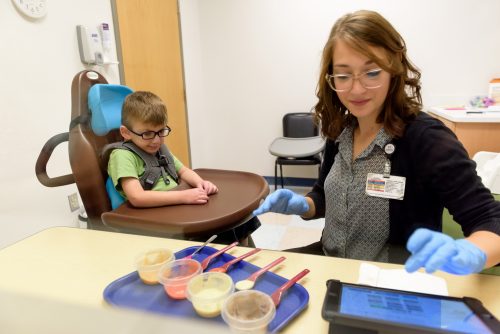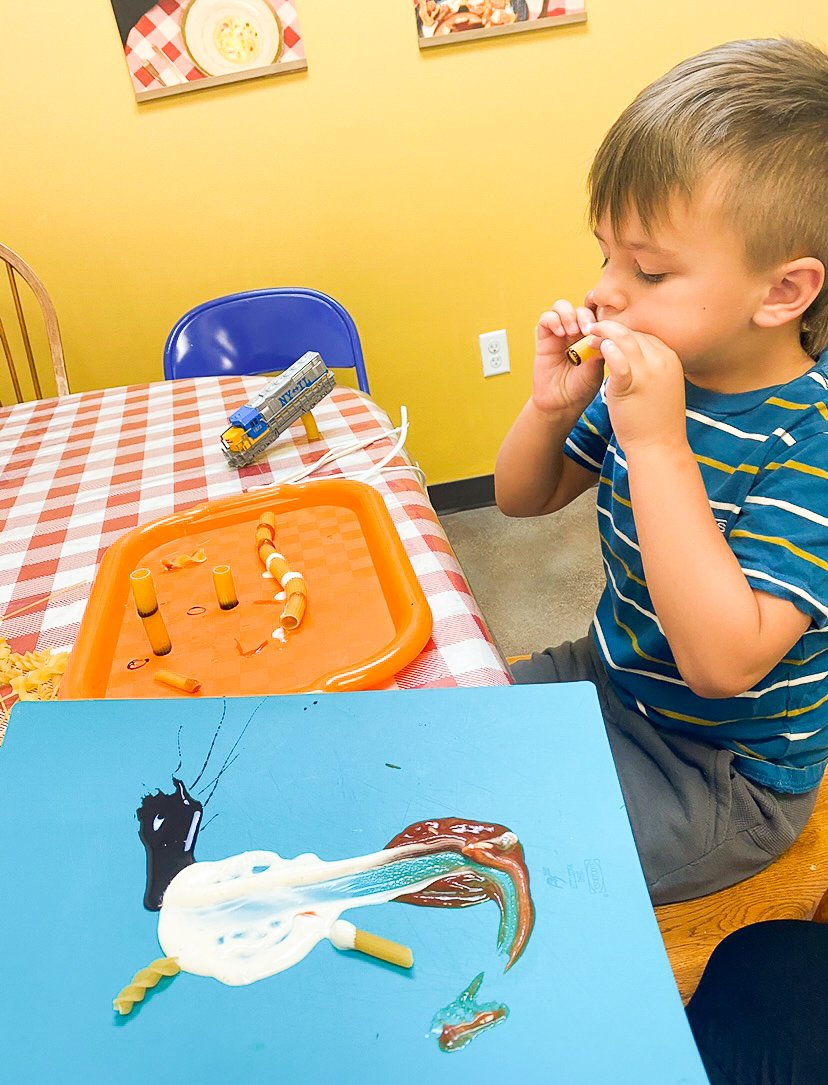Your Trusted Food Therapist on Long Island
Wiki Article
Browsing the Path to Successful Feeding: Ingenious Methods and Treatments for Reliable Feeding Therapy
Are you having a hard time to locate reliable methods and treatments for successful feeding therapy? Look no better. This post will certainly guide you via the path to success, giving innovative strategies to assess feeding difficulties and established achievable objectives. With evidence-based approaches, you'll learn exactly how to resolve sensory processing problems and make use of assistive technology and adaptive tools. Plus, we'll show you the relevance of working together with family members and caregivers for optimum feeding end results. Obtain all set to navigate the course to effective feeding!Assessing Feeding Obstacles and Recognizing Objectives
You should start by examining your kid's feeding challenges and determining particular objectives for their treatment. This step is critical in developing an effective feeding treatment plan. Begin by observing your kid's feeding habits and patterns. Look for any kind of aversions or troubles they may have towards specific foods or structures. Bear in mind of any type of physical or sensory issues that might be influencing their capability to eat. Once you have actually determined these difficulties, you can then establish specific objectives for their treatment. These goals should be realistic and possible, concentrating on boosting your kid's feeding skills and total nutrition. You may establish an objective for your kid to be able to endure a bigger variety of textures or to self-feed with utensils. It is necessary to interact these objectives with your youngster's feeding therapist so they can customize the treatment sessions to attend to these particular challenges. By assessing your youngster's feeding difficulties and setting objectives, you are taking the initial action towards assisting them develop effective feeding skills.Carrying Out Evidence-Based Strategies for Feeding Treatment
Applying evidence-based approaches for feeding therapy can lead to positive results for kids. When you include these approaches into your child's treatment plan, you are making certain that the interventions used are supported by clinical study and have been verified reliable. This technique raises the likelihood of success and aids address the specific feeding challenges your child may be experiencing.By following evidence-based techniques, you can supply your kid with the best possible care and assistance. These approaches might include using a variety of sensory experiences throughout mealtimes, such as exploring various textures and tastes, to urge acceptance of new foods. Furthermore, carrying out behavior modification strategies can assist attend to choosy consuming behaviors and promote healthier consuming patterns.
An additional crucial element of evidence-based feeding therapy is involving the family in the therapy procedure. By supplying education and learning and assistance to moms and dads and caregivers, they can play an energetic duty in helping their kid get rid of feeding challenges. This joint method enhances the performance of therapy and promotes lasting favorable changes in your youngster's eating behaviors.

Attending To Sensory Handling Issues in Feeding Treatment
Attending to sensory handling concerns in feeding treatment can be tough, but it is important for promoting a positive eating experience for children. When you experience a child with sensory processing troubles throughout nourishment, it is necessary to understand that their reactions to certain appearances, preferences, scents, and even sounds are not willful (food therapist farmingdale). By recognizing and addressing these issues, you can help develop a helpful atmosphere that urges healthy and balanced eating practices
This strategy allows the youngster to end up being familiar with the food and its sensory homes at their very own pace. In addition, offering a selection of structures and flavors can assist desensitize their sensory system and increase their food preferences.
Engaging the kid in sensory play tasks can also be beneficial. Motivate them to discover various textures, such as squishing, pressing, or touching numerous food items. This can assist normalize sensory input and lower aversions to particular structures.
An additional crucial aspect is providing a organized and calm eating atmosphere. Lessen interruptions, such as intense lights or loud sounds, which can overwhelm their senses and impede their capability to concentrate on eating. Developing a predictable regular and using aesthetic schedules can additionally help the youngster really feel even more safe and in control throughout mealtime.

Making Use Of Assistive Modern Technology and Adaptive Tools
Using assistive innovation and adaptive equipment can greatly boost the feeding experience for children with sensory processing problems. Nourishment can be overwhelming and challenging when you have trouble with sensory processing. With the right devices, you can make it a much more enjoyable and successful experience.One choice is utilizing specialized plates and utensils created to accommodate your demands. These utensils may have textured handles or a larger hold, making them much easier to hold and control. Plates with separated areas can aid separate various foods and stop them from touching, which can be a source of pain for some kids.
Along with specialized utensils and directory plates, there are likewise assistive devices that can be made use of during feeding. For example, a weighted vest or lap pad can give deep pressure input, aiding to calm and regulate your sensory system. A vibrating toothbrush or chewable precious jewelry can provide oral sensory excitement, making the act of eating extra satisfying.
Technology can additionally contribute in enhancing the feeding experience. There are applications and devices offered that can give visual or acoustic hints, such as timers or motivates, to assist you remain concentrated and organized throughout nourishment.
Collaborating With Families and Caretakers for Effective Feeding Results
When working together with caregivers and families, you can interact to produce a supportive and nurturing atmosphere for successful feeding results. By entailing families and caregivers in the feeding therapy process, you can get valuable understandings right into the kid's feeding behaviors, choices, and challenges. feeding therapy farmingdale ny. This cooperation enables an all natural strategy to feeding therapy, attending to not just the physical elements however likewise the emotional and psychological elements that might affect a kid's feeding capacitiesOne key facet of collaborating with caregivers and family members is offering education and learning and training. By furnishing them with understanding and skills, they can actively take part in the feeding treatment procedure and sustain the child's development beyond therapy sessions. This can consist of showing them feeding techniques, approaches for handling nourishment habits, and understanding the relevance of consistency and regimen in establishing healthy and balanced eating practices.
Additionally, entailing households and caretakers in setting goal and therapy preparation makes sure that their point of views and goals for the child are considered. By working together, you can develop realistic and possible goals that straighten with the family members's worths and top priorities - food aversion therapy long island. This joint method fosters a sense feeding therapy farmingdale ny of possession and empowerment, developing a solid foundation for successful feeding end results
Furthermore, normal and open interaction with caregivers and households is essential for efficient partnership. By keeping recurring discussion, you can address issues, provide assistance, and make necessary changes to the feeding treatment plan as required. This interaction likewise enables sharing progress updates, commemorating achievements, and recognizing any kind of challenges or barriers that may arise.

Final Thought
Congratulations on completing this short article on browsing the course to effective feeding! You have checked out different methods and interventions for efficient feeding treatment, such as analyzing difficulties, implementing evidence-based techniques, resolving sensory handling problems, and using assistive technology. By collaborating with households and caregivers, you can ensure effective feeding results. Keep in mind to constantly stay proactive and cutting-edge in your strategy to feeding therapy. Maintain up the magnum opus!It's essential to connect these objectives with your child's feeding therapist so they can tailor the therapy sessions to resolve these specific difficulties.Implementing evidence-based approaches for feeding treatment can lead to positive outcomes for youngsters.Dealing with sensory processing concerns in feeding treatment can be tough, yet it is necessary for promoting a favorable eating experience for youngsters. By involving households and caregivers in the feeding treatment procedure, you can get useful understandings into the kid's feeding view publisher site behaviors, preferences, and obstacles. By outfitting them with knowledge and abilities, they can actively take part in the feeding therapy procedure and support the youngster's progression outside of therapy sessions.
Report this wiki page